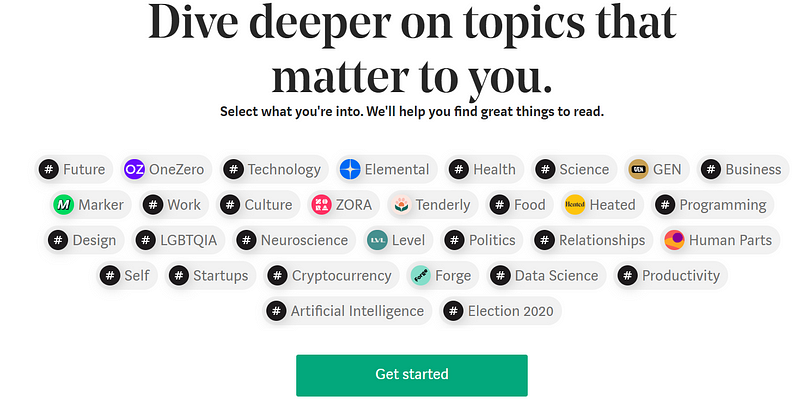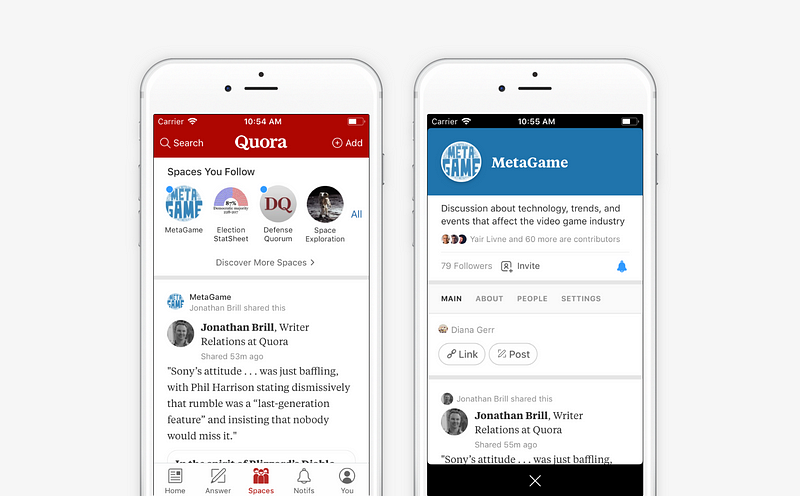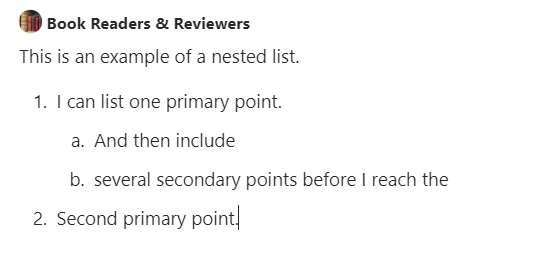Quora or Medium: Which Platform Is Best for Writers
The pros, the cons, and everything you need to know about the two blogging platforms

The pros, the cons, and everything you need to know about the two blogging platforms
As a new writer, it is natural to be confused about which platform to start publishing your articles in.
I have heard a lot of questions about which among Quora and Medium is the best platform to start writing. This article is going to provide a detailed analysis of the pros and cons of both platforms and what you can do as a new writer to reach a wider audience.
Before we start, here’s a little bit about me:
I have been writing on Quora since November 2014. With around 700 answers, 237 posts, and 1600+ questions, I have amassed almost 13 million views and 57,000+ followers. I am also a two-time Top Writer (2016 and 2018), and an owner of 10 Spaces, one of which has 400,000+ followers.
As for Medium, I had a profile and had published pieces since 2018, but I started taking the platform seriously since May 2020. Since then, I have amassed 2000+ followers and earned the Top Writer tag in 8 topics. I am also the founder of a publication which garnered 150+ followers in its first month.
For a visual version of these points and comparisons, watch this or click on the image below.
The Format
Here, I am discussing the format in which writers can share their thoughts.
Medium
Medium users can publish their content in the form of articles with a title and a sub-title. These articles can be self-published or added to a publication. Publications are like online magazines or collections of pieces sticking to a particular niche.
When you open Medium.com on your browser, here is what you would see. The links with a # in front of them are topics and the ones with logos are Publications.

Quora
There might be people who argue that Quora is a question-and-answer platform and the only content that can be added is in the form of answers. However, lately, Quora has come up with Spaces. These are equivalent to publications on Medium.
According to an official post by Abhinav Sharma, Product Designer at Quora,
Spaces can be used in a number of different ways. For example:
1. A group of people can work together to curate the most interesting answers and links about a particular area of interest, such as Farm-to-Plate or SaaS Daily.
2. An individual can use spaces to organize their own writing into different sections, as Robert Frost is doing with his collection of his Space Exploration answers, Mac Tan with his posts on the US Midterm Election, and Salon with their Culture and Politics articles.
3. A community of people can create a space to have shared conversations with each other, like Science Lounge or Defense Quorum.

The key takeaway
While the way of sharing content is more or less similar in both platforms, the onus lies on the writer to find the relevant publication (in case of Medium) or the fitting Space (in case of Quora).
Of course, posts can be self-published on your own profiles. However, sharing your content on publications or Spaces gives you the added advantage of harnessing the huge follower count of these. Your articles will be shared with the followers of the publication or Space, in addition to your own followers.
The Formatting
This section is for discussing the formatting tools available to the writers for structuring their articles and making them easily readable.
Medium
Medium has one of the best systems of formatting I have seen in any online platform. What makes articles on Medium stand out are the headings, sub-headings, and the feature images (with integrated Unsplash).

- To add a heading or sub-heading: Just select on the text you wish to highlight. From the menu that pops up, select the larger T for headings and the smaller T to make it a sub-heading. When you click on it, the chosen piece of text will become a sub-title.
- To add quoted text: Select the text you wish to highlight and click on the “ icon in the above menu.

- To add a featured image: When you press “Enter” on your Medium article, you see a small “+” sign at the left. Click on that, and this panel appears. From here, click on the magnifying glass (loupe) icon and type your keyword for the image. You will see a gallery propping up. These are high-resolution, duty-free images from Unsplash. Just click on the most appropriate one, and both the image and the credits will be added to your article.
- In addition, Medium has the option of bulleted lists (where you can type in a * and start writing the text) and ordered lists (type in 1 and start writing your text).
Quora
When you go to a Quora Space, you would see an option of “Say something…”. When you click on that, a window pops up where you can start writing your post.
Posts on Quora have the following options of formatting-

- H1 is for heading or title. There is no option to add a subtitle.
- B and I are for bold and italics, respectively.
- The next two buttons are for ordered and unordered lists.

- One way in which Quora posts can look better than Medium posts is the option to use nested lists (screenshot attached).
- There are also options of adding quoted text. However Quora supports only pull-quotes (unlike pull-quotes and block-quotes in the case of Medium)
- Quora also supports bits of codes and mathematical equations which can be added by clicking the {} button.
The key takeaway
Both platforms have their own unique features. The ones that work the best in Medium’s favour are the option to add a featured image and the headings and sub-headings that make an article look crisp and clear.
In the case of Quora, the nested list is a unique feature which helps articles look well-formatted. In my opinion, it wouldn’t hurt much for Medium to add the option of a nested list.
Payback for Writers
This section is for discussing what you, as a writer, stand to gain out of sharing your work on both these platforms.
Medium
The revenue model of Medium is based on payment from readers. Each person pays $5 each month to read articles on Medium. This amount is distributed to the writers of the articles based on how many minutes their articles are being read through the Medium Partner Program.
Since readers will only read high-quality articles that provide some value, this translates to writers being compensated for their efforts.
In addition, Medium has an amazing team of curators who read almost every piece published on this platform and submitted for review. Even if a new writer publishes a high-quality article, there is a chance of the curators selecting it for broader distribution.
Quora
In the case of Quora, the primary revenue model is through advertisements. This brings down organic reach as paid content will be distributed widely over the platform.
Also, since advertisements focus on the visual aspects and clickbait titles, the kind of content that ends up being viral on Quora is one that either has an appealing photograph and is about topics (like relationships, movies, pop culture) that have mass appeal.
In my experience, topics like science, education, self-improvement and personal development don’t do too well on Quora. But, I have seen cases where answers with nothing but a picture of mine reach tens of thousands of views.
The Quora Partner Program pays users on the kind of questions they ask, without compensating the writers who spend time and effort in writing detailed and thoughtful answers. Recently, Quora has also started a Space Earnings Beta Program where owners of Spaces get monetary compensation for the content shared on their Spaces. However, as this is still in its beta stage, the earnings haven’t been much for most Space owners.
The key takeaway
Advertisements and topics having mass appeal have made it difficult for new writers to get noticed on Quora, especially if they write about topics not having a wide following.
On Medium, however, because of the curators and the kind of audience who values quality content, even a new writer with 0 followers has the chance of writing a viral article if they maintain clarity of thought and follow the Medium curation guidelines.
The one crucial point to remember is this: Quora has a much larger user base compared to Medium. Therefore, a viral post on Quora can have millions of views on a single post. On Medium, the virality is limited to a few hundred thousand views per post.
The Bottom Line
For a new writer just starting out with content, both these platforms are brilliant ways for you to reach a broad audience. You can build a following on these platforms as both of them already have an established base of readers.
You don’t have to work hard about learning SEO tricks or promoting your articles as you would have to do if you start your own blog. If your content of high quality (in case of Medium) or it is click-worthy (in case of Quora), the platforms are going to take care of the distribution.
If you ask me, I have spent a longer time on Quora, but I prefer Medium because-
- I get to read quality articles without working hard to search for my next read or filtering through a lot of clickbait headings.
- I feel valued as a writer (monetary compensation always helps).
For more information about making money through Medium, you can go through the following posts-



